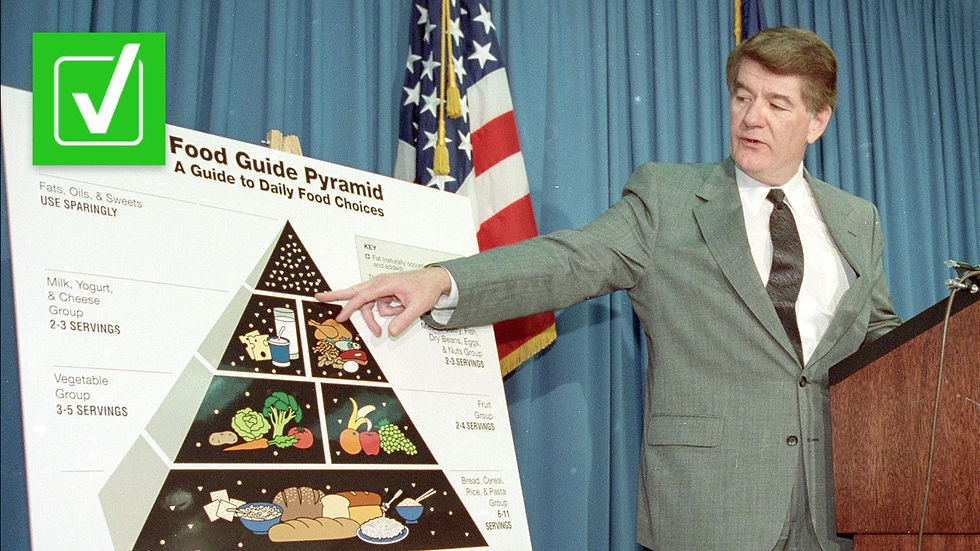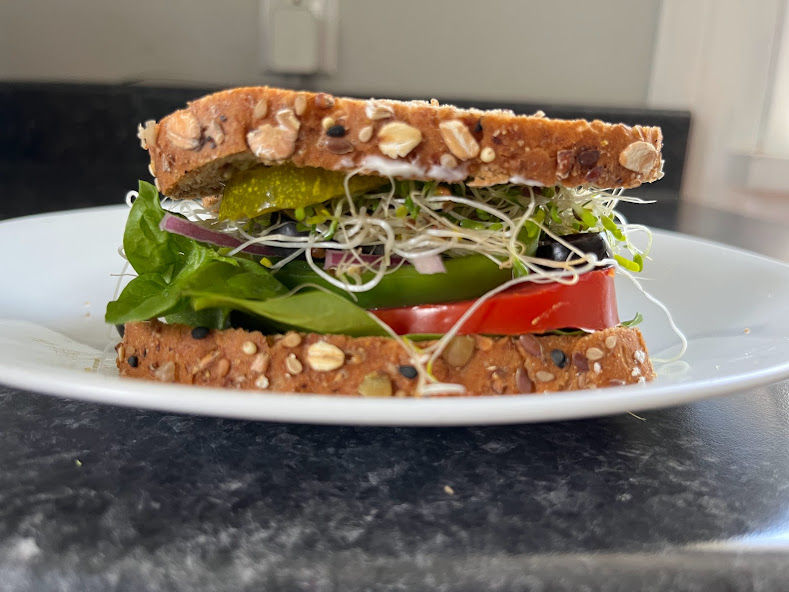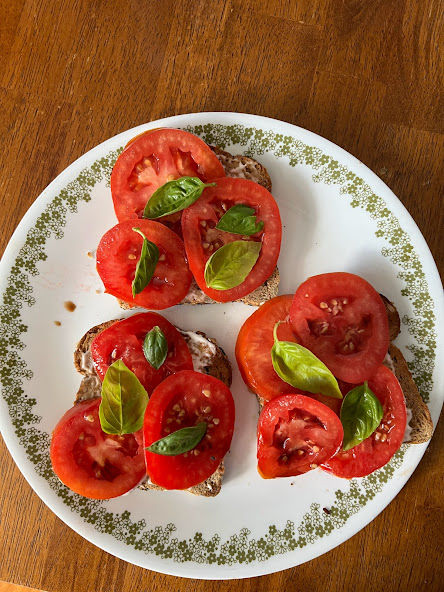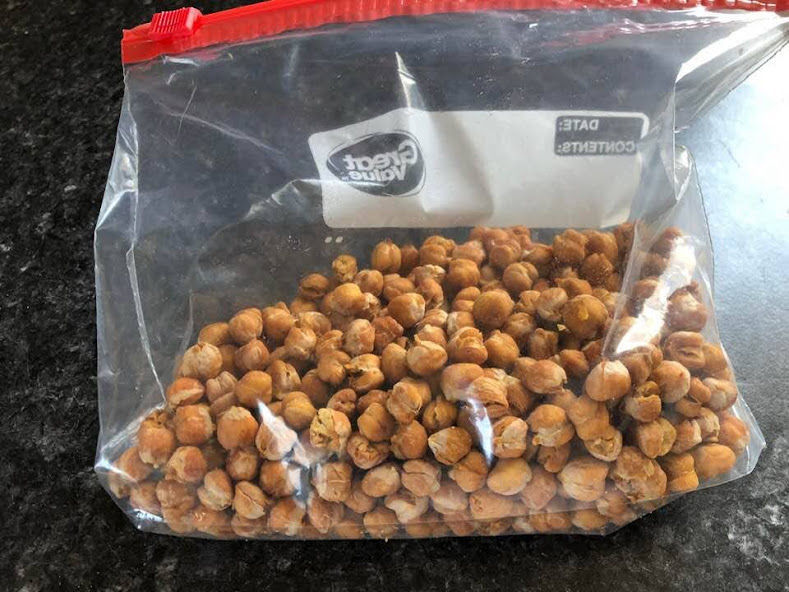I've been a "plant-focused" eater for almost 5 years now. While I still have the occasional helping of meat or dairy, it has become so much easier to pass it up because of the effect it has on my body. I guess you could say I follow a Mediterranean diet, just a little more strict.
Simply put, when I want to feel good, I eat plant-based. It really does matter.
Being a plant-based eater is so much more than avoiding animal products. It means specifically seeking and consuming nutrient and fiber-rich fruits, vegetables and other whole foods. That is where the magic happens. You simply cannot get the same benefit from processed foods -- even the "plant-based" kind. Junk food is still junk food. Oreos are technically plant-based, for example. See what I mean?

Some hurdles in plant-based eating
I LOVE talking about the health benefits of this way of eating, but I'll save that for another post. The changes, for me, have been phenomenal. I really can't believe how much healing has taken place in my mind and body.
But there were some obstacles for me in adopting this plan. One of the biggest was food prep. As I started following facebook groups, reading books, and subscribing to blogs, I felt discouraged by the sheer amount of work I was witnessing. Because our world is not really health-food friendly, the burden largely falls on the consumer to store, prepare, and cook healthy food. Kind of like the old days. And I'll admit, I'm a fan of the ease and convenience of modern food.
Also, fresh food spoils. Without the processing and preservatives, food is actually a pretty fragile commodity. Especially if it's natural.
In many ways, I was entering an entirely different world than the way I had raised my family. When my kids were growing up, all of my meals were based on a tummy-filling starch -- usually potatoes, rice, or pasta. They were all flavored with meat of some kind, although our budget didn't allow for a lot of it. I would usually make a token vegetable side dish that no one ever bothered to eat (including myself). My conscience demanded that I at least open and warm a bag of frozen mixed vegetables and put them on the table. What a waste!
Now, in my quest for a different lifestyle, I struggled to adapt my old recipes to be plant-focused. They just simply wouldn't translate well. So I found myself re-learning how to cook -- and experiencing an entirely new set of flavors and textures. Worth it, but a challenge just the same.
Added to that challenge was the fact that I had been indoctrinated from elementary school and beyond that the government-sponsored "food pyramid" was the gold standard for optimum health. The one from the 70's. Just to put things in perspective, some of the other prevalent health advice at the time was to avoid breastfeeding your baby (formula was considered superior) and a doctor's advice to crack a raw egg in your baby's rice cereal for extra protein and nutrients. *Shudder*

We somehow managed to survive those kinds of things, but I still struggled to make the changes. In my mind it was simply wrong to build a meal entirely around fruits and vegetables.
Slowly, I'm learning a new way. And I like it. But I often think it would have been nice to get some advice on "transitioning". Some of the recipes I have found and tried are delicious, but an insane amount of work. That's just not for me.
Standing in the kitchen is not where I want to be. I know not everyone feels that way, but even if you love to cook, time is precious to us all in this fast-paced world. Here are a couple of tips and tricks I've learned long the way.
#1 - Keep It Simple
I really needed someone to tell me that it's OK to simply eat an apple and some peanut butter for a meal. Not a snack, a meal. Or some black beans out of the can, microwaved on a corn tortilla with a little cholula sauce and some freeze dried kale. Or a handful of nuts and berries for breakfast. Or a piece of fruit.
But I'm here for you. I will tell you -- IT IS OK. There's no meal nazi that will come and penalize you for not having a plate full of food. But gosh, this one was hard for me. Mentally I could not get past the idea that if I didn't have my starch and protein and fruits and veggies arranged artfully on my plate, I couldn't call it a meal.
Once I finally let that go, everything changed. I felt free again. It is the same freedom that pulling up to the drive thru at a fast food joint gives you, just way way better. Now I happily chomp on carrots and hummus on the way to run errands, or a warmed up baked potato (sweet or white - ) and my body AND my mind feel fed.
In the beginning I spent a lot of time and energy trying to duplicate or make healthier versions of our old favorite dishes. Things like lasagna, lemon pepper chicken, breakfast burritos, etc. There are some really awesome recipes out there for plant-based copycat recipes, but they often call for a lot of rare ingredients and create a mountain of dirty dishes (a pet peeve of mine).
We learned instead to embrace new, simpler recipes and dishes. Things like yum yum bowls and whole grain pasta dishes. Soups, salads, smoothies, soy curls and stir fries. Different kinds of curries and veggie pizza.
#2 - Don't Get Stuck In A Rut
While simplicity is key, variety is still a necessity for physical health and mental satisfaction. We need our food to be pleasant so we'll stick to the plan.
One of the things I noticed in the early months was that I got stuck in a tex-mex rut with my meals. It was easy to convert and find recipes with great flavor that checked all the plant-based boxes. But as we shuffled from tacos to burritos to bowls, I started to feel like we were eating all the same flavors.
The same thing happened with salads. I found some favorite combos and then proceeded to eat them regularly. Soon, I found myself less than enthused about dinner time.
I began to make a conscious effort to try different cuisines and tastes. Even successfully adapting some of our traditional favorites. We now have favorites across the board: Italian, Asian, Indian, Island, Mexican, American, and more. I still require that all of my recipes be simple, but we get to enjoy more tastes.
Our fridge now has five times more sauces and flavorings than it ever used to have. Explore new spices and herbs and seasonings. Mix and match. It's fun and it's tasty!
#3 - Think outside the box
I remember finally realizing one day that I was convinced to the core of my being that I couldn't have a sandwich without SOME kind of nut spread or cheese or meat. The very idea of piling just vegetables between two slices of bread was utterly laughable. Until I tried it. Yep, you guessed it. It was amazing. My favorite simple sandwich is now two thin slices of Dave's killer bread, spread with a little pesto and piled high with sprouts, thin sliced green peppers and purple onion, sliced black olives, pickles, spinach, tomatoes, and any other veggie you want to throw on. Outstanding. And a very nourishing meal.

Did you know you can make chicken noodle soup without chicken? Or enjoy a truly remarkable "carrot dog" at a barbecue? Try cauliflower hot wings. Or a veggie enchilada at a restaurant. Don't let your brain trick you into thinking those things are weird. Nothing is as satisfying as enjoying a truly delicious, cleaner, healthier version of an old favorite and then enjoying how you feel the rest of the day after eating them.
Here's a fun fact: Things actually CAN taste good without cheese. I know, I never would have believed it. Our traditional tomato cheese melt (during tomato season) switched to tomatoes sliced on toast with balsamic splashed on them, and a sprig or two of fresh basil. You can broil it to meld flavors or just eat as is. It's seriously delicious.

Remember also to add, add, add -- especially greens and beans. And other vegetables. Add them to things you didn't think they'd pair with. You'll be surprised. As an example, I always put freeze dried kale or spinach on our tostadas. You can't even taste it, but we're getting the nutrients. I throw a bag of frozen broccoli and cauliflower in my whole grain pasta salad along with kidney beans and chickpeas and other beans, and the usual peppers, tomatoes and cucumbers.
I just read an article about some centenarians from Italy who had bean and veggie filled minestrone soup for breakfast (and usually another meal) every day. Definitely not your typical american breakfast food, but sounds delicious to me. So much goodness. So many possibilities! Share some of your own in the comments!

#4 - Maximize shortcuts
Nothing will throw off your plans more quickly than needing a quick meal or snack and having nothing prepped or planned. Those are the times you find yourself reaching for chips or something worse.
You can anticipate and head off those troublesome moments with a little forethought. Freeze dried food is a life-saver in a plant-based diet. It has the same nutrition, but doesn't spoil. So it's on hand whenever you need it. I love to snack on all the fruits, and surprisingly, many of the vegetables as well. The broccoli, green beans, and red and green peppers are big favorites of mine.
You'll find meals going together more quickly as well when you don't have to wash and peel and chop onions or celery or peppers or mushrooms. So many recipes I make would not make the cut for me without the Thrive freeze dried version.
Utilize your crockpot and pressure cooker. They are such time-savers! Embrace leftovers. Make a big pot of soup with lots of veggies and whole grain pasta. Stir fries go together in minutes and you can use all different kinds of veggies and sauces or seasonings. As mentioned above, we love to bake an oven full of sweet potatoes and russets and keep them in the fridge for the hungry times. No need to even put them on a plate. Sprinkle them with a little seasoning and eat out of hand.
Buy the little single-serve hummus and guacamole cups. Dry roast a huge pan of chickpeas to have on hand to munch. Cook up more brown rice than needed and pop it in the freezer for quick access later. Freeze leftovers in single-serve containers for a busy night or lunch on the go. These little things will insure that you stay on target and continue to relish this lifestyle.

#5 - Re-educate yourself
This one may seem strange, but it's important. Many is the afternoon or evening when I'll set a meal down on the table and cheerfully inform my husband that every cell in his body is about to start partying because there are SO many vitamins and nutrients in this dish. He smiles indulgently, but I know it makes an impression. Funny enough, it makes an impression on me as well. Because it's true.
Once we started on this journey, we kept learning. We read books, watched movies and documentaries, read articles and listened to testimonials. In all my life, I've NEVER read and heard more convincing, authentic, impassioned stories than the ones of people whose lives have changed simply from switching to clean whole food -- specifically plant-based foods. It's truly remarkable and infinitely inspiring. Find what's out there and let it fill your soul!
You'll soon have your own stories (goodness knows I do) and you'll hardly believe how it happened!
Conclusion
Eating plant-focused or plant-based isn't actually very hard. The tastes are exotic and flavorful and rather than feeling restricted, in a strange way, I feel liberated. By incorporating some of the tips above, you will find yourself adapting quickly and finding incredible satisfaction.
Are you already plant-based? Aspiring to be? Share YOUR tips with us! Let's enjoy this journey together!

































Comentarios